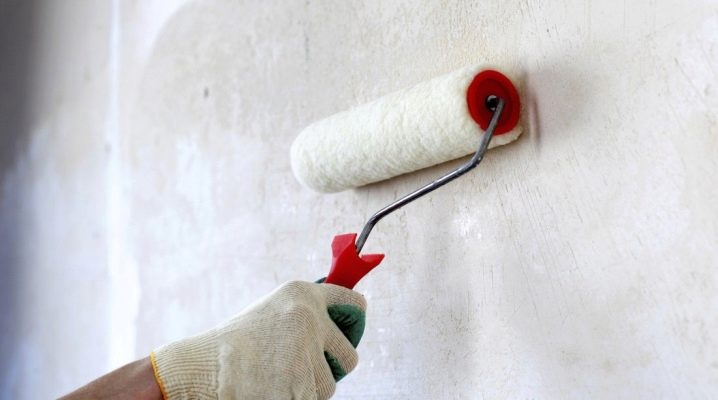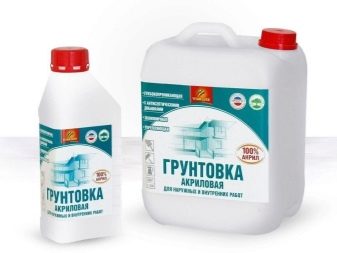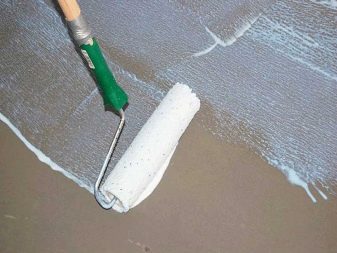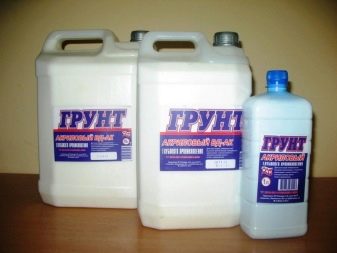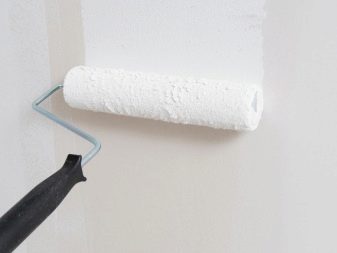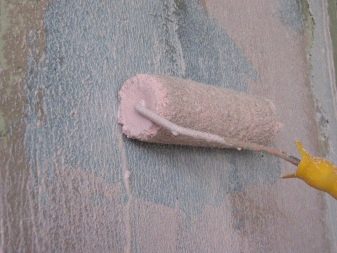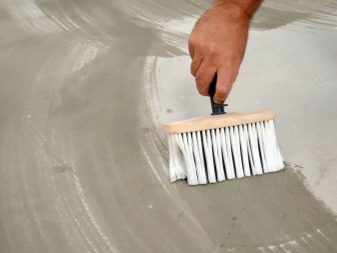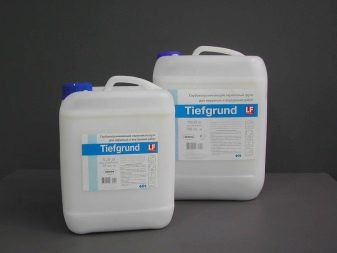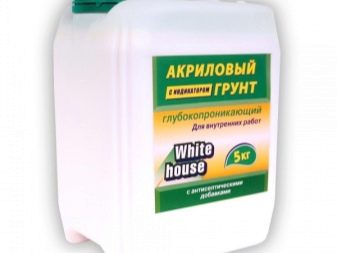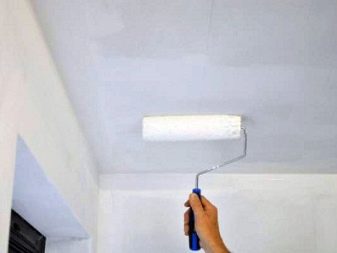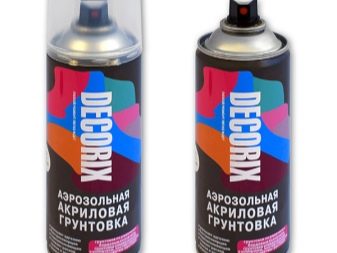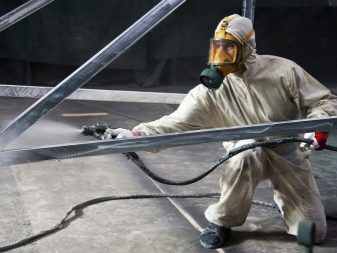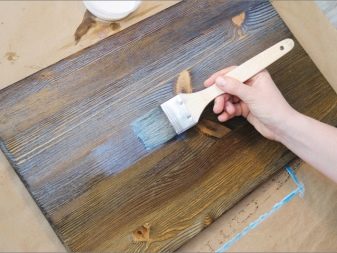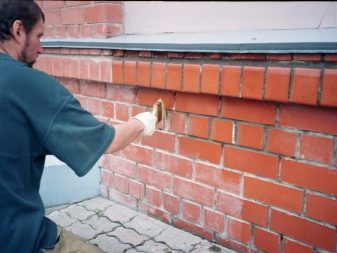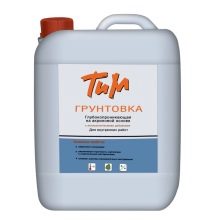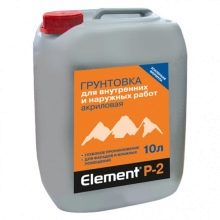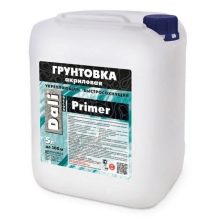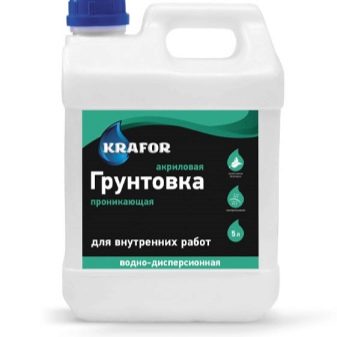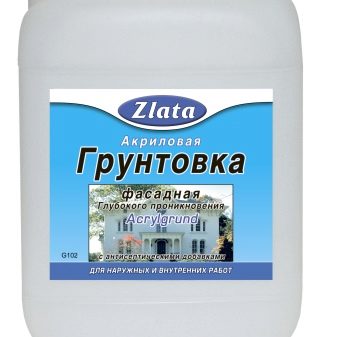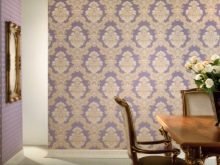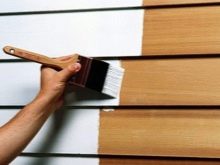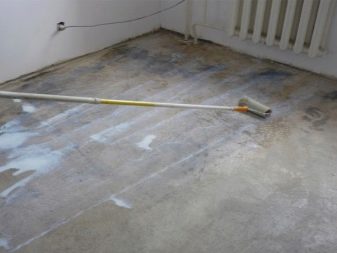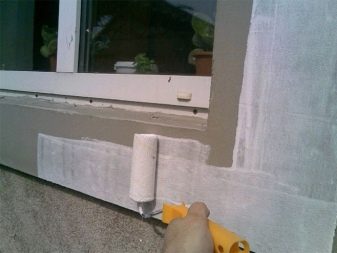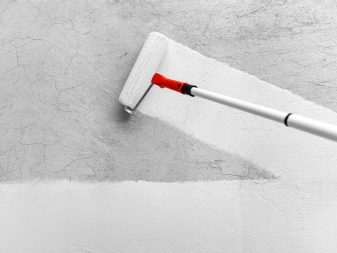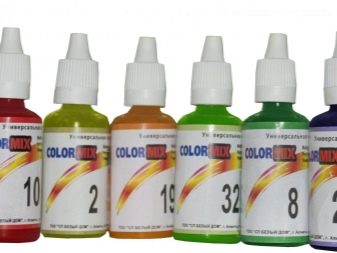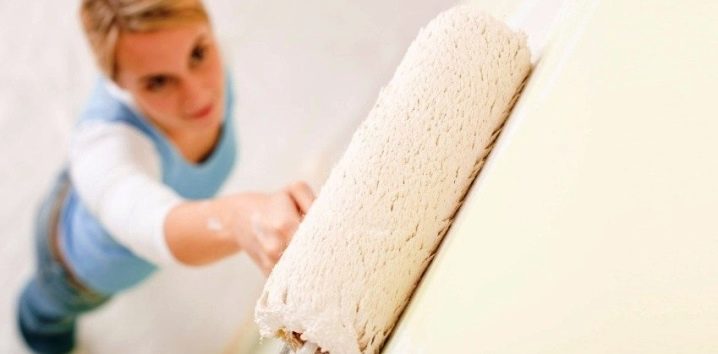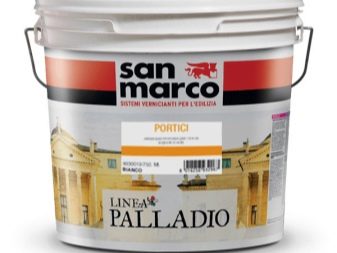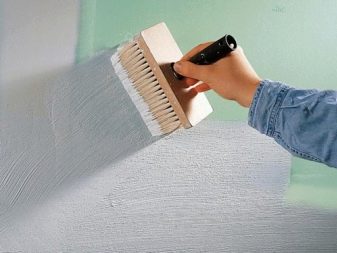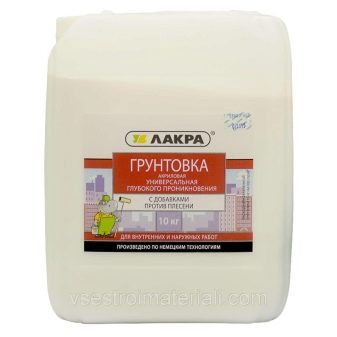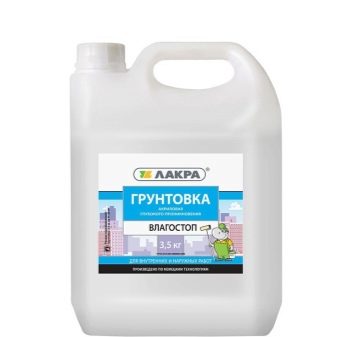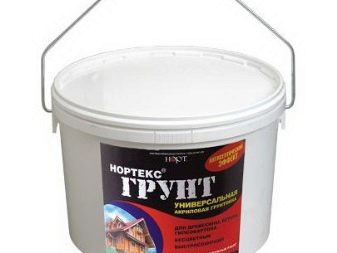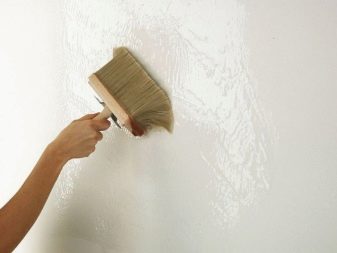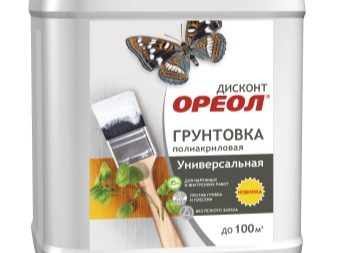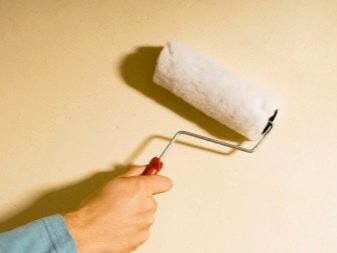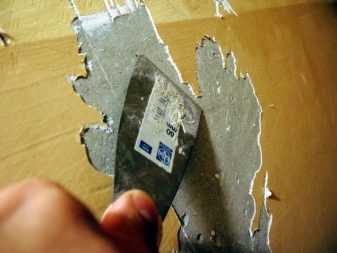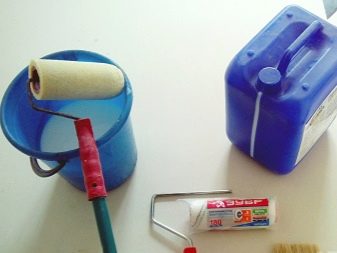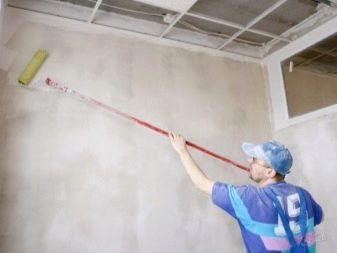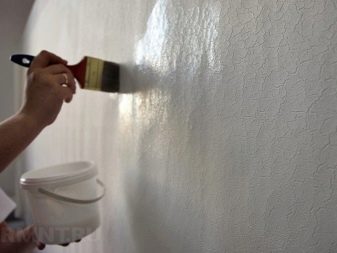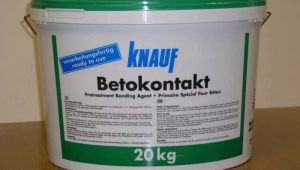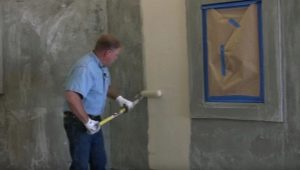Acrylic primer: features of choice and application
Acrylic based blend is one of the popular types of primer compositions due to its versatility in application. Different surfaces are treated with this solution before finishing: this allows to increase adhesion, protect the surface from fungus and mold, and also reduce the consumption of paints and varnishes or adhesive mixtures. Features of the choice and application of acrylic primer will be discussed in more detail in this article.
Special features
Acrylic primer is a liquid solution based on acrylic dispersion and special components. The peculiarity of this composition, above all, lies in its protective qualities. The mixture is well absorbed into the surface, which have a porous structure, thereby strengthening the base.When the solution dries, a high-strength protective film is formed on the surface, which, in turn, improves the adhesive properties and helps reduce the consumption of paint or adhesive material.
Acrylic primers may vary in composition and some properties. However, all acrylic-based mixtures have common features and characteristics:
- the soil makes the treated surfaces more durable, especially if a deep-penetrating or strengthening mixture is used;
- reliable protection from moisture: created on the surface of the film repels water;
- increases adhesion level: the topcoat will adhere well to a substrate treated with soil;
- reduces the consumption of paint-and-lacquer or glue mixtures during the final finishing;
- vapor permeability;
- good covering ability: dark-colored surfaces treated with acrylic primer will not shine through under the finish layer of the paintwork of light tones.
The composition of the mixtures on the acrylic base may include a different set of components. However, acrylic primers have common substances in the composition:
- water or an organic solvent as a base;
- binding elements that provide a solution with a certain viscosity: drying oil, various resins, polymers;
- colorants;
- catalysts that accelerate the process of drying the primer mixture;
- special additives that give the solution certain qualities: antifoaming agents, biocides.
Specifications
The properties of acrylic primers may have some differences depending on the composition. When buying a solution based on acrylic You should pay attention to the following specifications:
- Mix consumption. It should be borne in mind that the consumption of the mixture depends on the material from which the treated structure is made, the type and form of release of the priming solution. More accurate consumption figures per square meter are always indicated in the list of technical indicators on the product packaging. It is worth remembering that aerosol mixtures are spent the fastest.
- Shelf life.
- The presence of toxic components in the composition. This indicator is especially important when the work will be carried out indoors. To minimize harm to health, it is better to purchase eco-friendly formulations without organic solvents.
- The purpose of priming composition. Practically for each type of base, a separate acrylic primer is produced with special additives. If you need to process several surfaces from different materials at once, you can use a universal composition.
- Form release. Dry powder primers are extremely rare. Most often, the solution is sold ready to use. The consistency of the primer can be pasty or completely liquid. Acrylic soil is packed in buckets of various sizes or produced in the form of aerosols in cans.
- Full drying time.
Kinds
On the modern market of finishing materials you can find many varieties of acrylic primers. Depending on the composition of the solution is determined by its scope.
Purpose
Manufacturers of primer materials produce certain types of acrylic mixtures, which are designed to process certain surfaces. By appointment, the following types of solutions can be distinguished:
- Universal purpose. This type of solution can be used to process any material.
- By metal.Such a primer composition has anti-corrosion properties. For each type of metal, you can choose a separate composition.
- On concrete. Primer material for ceilings, floors and walls of concrete. Soil of type beta contact is used both for internal work and for external work.
Betocontact is used to increase the level of adhesion of concrete bases before final finishing with ceramic tiles or decorative plaster.
- For wood. Antiseptic primer is necessary to protect wooden structures from fungal growths and the spread of mold. In addition, the primer material protects the surface from the negative effects of moisture.
- For artwork. This solution is necessary to prepare the surface before coating artistic paints. This primer is excellent for plastics, wood, glass, cardboard.
- For facade work. This primer is made on acrylic base with the addition of latex. Latex compounds protect the surface from the influence of negative environmental factors.
Composition
Acrylic-based primers may contain various special additives, which, in turn, give the solution additional properties. All acrylic blends by additional properties can be divided into the following types:
- Deep penetration. It has a good ability to penetrate into the structure of various materials. The mixture fills the pores and strengthens the base.
- Impregnating. This mixture makes the level of absorption on all parts of the surface the same.
- Antiseptic.
- Adhesive. This composition is aimed at maximum improvement of the adhesive properties of the treated surface.
- Firming. In contrast to the deep soil does not fill deep pores of the base, and creates an outer reinforcing layer on the surface.
Acrylic-based mixtures differ in composition by type of solvent used and some special additives. The following types of acrylic primers are distinguished.
- Water dispersion primer. It is considered absolutely harmless to health composition. The mixture is odorless, so it can be used indoors. However, the solution on a water-dispersion basis in performance is inferior to the composition with organic solvents.
- With organic solvents. This composition provides more reliable protection of the treated surface. The disadvantage of this tool is its low toxicity. Such primers are well suited for facade finishing.
Which is better?
Each modification of the primer mixture based on acrylic has its own advantages. Choosing the right composition, first of all you need to consider the material of the treated surface. As mentioned above, there are separate types of mixtures for certain surfaces, for example: wood, metal or concrete.
It is also important to pay attention to what material will be used for finishing the surface. Deep penetration primer is excellent for treating the base under wallpaper. Wallpaper canvases on primed walls are fastened easier and securely fixed. In addition, acrylic deep-penetrating mixture will reduce the consumption of glue.
Wooden structures before painting are recommended to be treated with a special primer for wood. As a result of priming, a protective film is formed on the surface, which will reduce the consumption of paints and varnishes during final application.In addition, the primed wood paints and varnishes fall more evenly and do not form stains.
For a concrete floor, a water-based deep-penetrating acrylic primer is a good option. This composition is also suitable for the treatment of wooden floors under the finishing layer of acrylic varnish.
Priming solutions, which include organic solvents, have higher technical characteristics than water-soluble mixtures. The solvent based primer is mainly used for exterior applications.
When working with such a composition indoors, you need to take care of good ventilation of the room, as well as some measures of personal safety.
Water-based mixture is an environmentally friendly material: this solution is odorless and does not emit toxic substances into the air. Acrylic water-dispersive primer is used for interior finishing work.
Color spectrum
Acrylic base priming mixes are most often available in white or colorless. White solutions look a bit cloudy and visually similar to milk.Mixtures for exterior works of acrylic and latex have a wide color range. In addition, you can choose a suitable color to your white basis at your discretion.
Manufacturers
To get a good result when priming a particular surface, you should purchase only high-quality mixtures with high technical characteristics. Before buying an acrylic-based primer, you should familiarize yourself with the leaders in the production of paints and varnishes and the products they offer.
San marco
The Italian company San Marco is a leader in the production and sale of paints and varnishes for professional construction. The company supplies its products to more than a hundred countries around the world. At the San Marco production sites, new technologies are regularly introduced, which allows us to constantly improve the quality of our products and develop new materials modifications.
San Marco Portici concentrated acrylic based primer is designed for interior work. The mixture can be applied to plaster, concrete surfaces and sheets of drywall. Portici primer mix penetrates deep into the structure of materials, thereby strengthening the base. The solution improves the adhesion of the walls to the finish coating.
Portici water-soluble primer can be applied in just one layer, which significantly saves the consumption of the mixture. The drying time of the solution is forty minutes. If necessary, applying a second layer is recommended to wait four hours after applying the first.
Lacra
Firm "Lakra" specializes in the production of paints and varnishes. All products are manufactured using modern imported equipment. Materials are made from high quality foreign raw materials. Products undergo quality control at all stages of production.
The company "Lacra" produces a wide range of acrylic-based soils. Mixtures differ in their composition and purpose, which allows you to choose the right composition for any work and surfaces.
Almost all of the primer materials on the acrylic basis of the company "Lacra" include fungicides.
"North"
The company "North" produces a wide range of modern building and finishing mixtures. The quality and technical indicators of paint and varnish materials of the “North” company are superior to many analogues of both Russian and imported production.The company has implemented scientific laboratories to develop their own unique technologies for the manufacture of materials.
Acrylic blend "Norteks Soil" it is intended for processing wooden, concrete, brick and stone surfaces inside and outside the room. The primer can also be applied on plastered walls or plaster. The composition of the solution "Nortex Soil" includes antiseptic components, which allows you to protect the processed materials from fungal growths and mold.
The primer forms a colorless coating. However, in the mixture you can add colors of the desired shades. Acrylic solution strengthens the structure of the impregnated material and improves adhesion with the final coating.
This composition is perfect for processing various surfaces before painting, as it significantly reduces the consumption of paint and varnish material.
Empils
Empils is one of the largest manufacturers of paints and varnishes in the Russian market. All materials are manufactured using advanced technologies and comply with international quality standards. Empils' paint and varnish coatings are characterized by their versatility andenvironmental friendliness.
Polyacrylate priming mixture "Oreol", manufactured by Empils, is water-based. The product has a low price and versatility. The primer contains antiseptic additives, which allows the solution to be used not only for internal but also for outdoor use.
Primer "Oreol" protects the base from the appearance of fungi and mold, as well as levels absorbency on all parts of the surface. Mix is issued in a look, ready to use. The total drying time of the solution is not more than one hour.
Application tips
Before applying acrylic primer to the surface, the substrate must be prepared. The surface is cleaned from the layer of the old coating, washed from dirt and degreased.
If the priming solution is applied to the metal, then in the presence of rust it must be removed. Wood surfaces are sanded with sandpaper. Concrete bases are pre-leveled.
The priming mixture is most often produced ready for application. If the solution has a very thick consistency, then it can be diluted with water or a solvent (depending on the composition of the primer).Detailed information on the preparation or possibility of diluting the mixture will be indicated on the product packaging.
It is possible to distribute the primer composition using a paint brush, spray gun or paint roller. It should be borne in mind that the mixture consumption will depend on the selected tool. Working with a paint brush will provide the most minimal expense, which can be about ninety grams per 1 m2. When using a roller, the cost of a primer will be about one hundred and ten grams per 1 m2. The greatest expense will be when working with an airbrush or on the ground in aerosol cans.
Relief surfaces are best handled with a paint brush. On a flat, large area, it will be easier to work with a roller. Mixture consumption when working with the spray gun can reach one hundred fifty grams per 1 m2, but this method of application is characterized by the least effort and time-consuming.
Regardless of the base material, it is recommended to apply the primer composition in at least two layers. Each subsequent layer is applied only after complete drying of the previous one.
For more information on choosing the right primer, see the next video.
